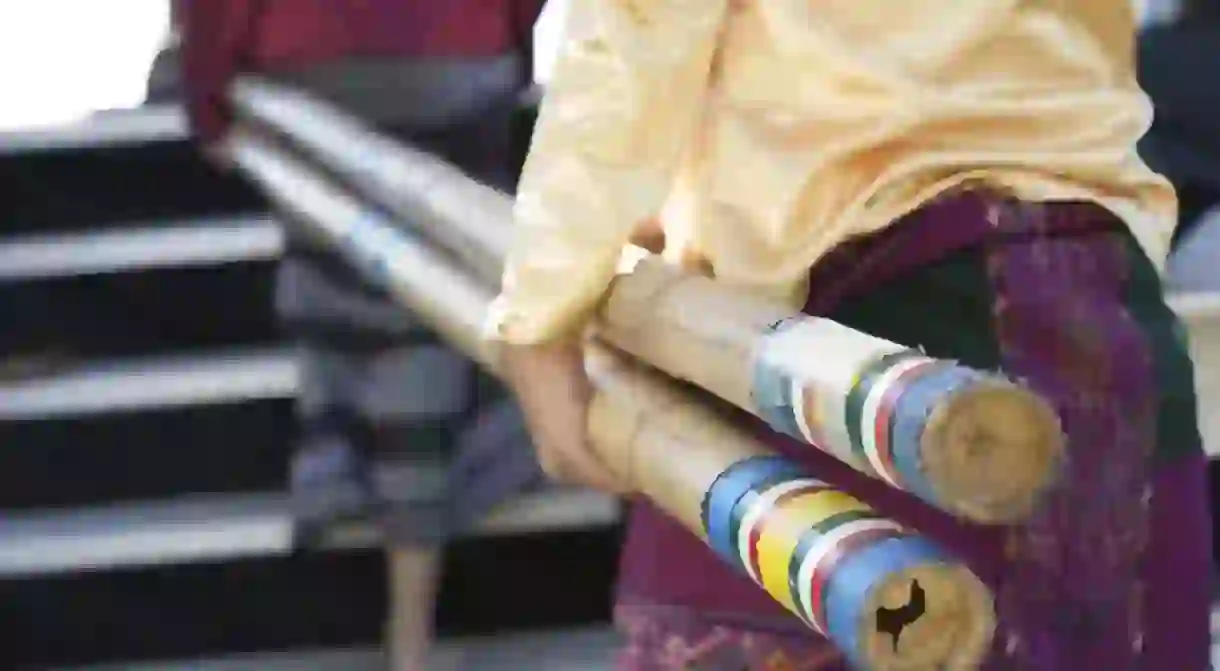Tinikling: The National Dance of The Philippines with Bamboo Poles

One of the most popular folk dances in the Philippines is the Tinikling. The traditional dance, which usually involves a pair of two bamboo poles, is considered to be the oldest in the country and its appeal has spread across the globe – particularly to the United States.
Why is the dance called Tinikling?
Wondering how this type of dance got its name? The Tinikling is said to be named after the long-legged bird called the tikling in the Philippines. This bird belongs to a number of rail species, but the name typically refers to the slaty-breasted Rail (Gallirallus striatus), the buff-banded Rail (Gallirallus philippensis), and the barred rail (Gallirallus torquatus).
Someone who dances the Tinikling imitates the movements of a tikling bird (hence, tikling-like) as the bird walks over the grass or dodges bamboo traps set by Filipino farmers on vast rice fields.
Stories behind the dances’ origin
According to historical accounts, the Tinikling dance originated during the Spanish occupation in the Philippines – particularly on the island of Leyte. Rice farmers on the Visayan Islands usually set up bamboo traps to protect their fields, yet tikling birds dodged their traps. Locals imitated the birds’ movement, and supposedly, that’s how this dramatic traditional folk dance was born.
However, according to legend, the dance originated during the Spanish colonial era when locals were ordered by the King of Spain to work on large plantations. Those who did not follow his orders or worked too slowly were given a punishment: to stand in between two bamboo poles.
These poles were then clapped together in an effort to beat the Filipino natives’ feet. To escape this punishment, the Filipinos would jump when the two poles were about to be clapped. This practice of jumping between the poles eventually transformed from a challenge into an artistic dance.
Dancing the Tinikling
Alongside the Cariñosa dance, the Tinikiling is considered a national dance in the Philippines and almost every Filipino knows how to do it. Since it’s a dramatic dance, it’s usually performed on special occasions like traditional Filipino festivals or at school and theater performances. Some say that this dance represents most Filipinos’ two main character traits: They’re resilient and fun-loving.
To dance the Tinikling, you need two pairs of bamboo poles that are each 6-12ft long (about 1.8-3.7m). Female dancers usually wear a dress called a Balintawak (a colorful dress with arched sleeves) or a Patadyong (a checkered loose skirt that’s often worn with a thin-fibered blouse). Males wear an embroidered formal shirt that’s untucked called the Barong Tagalog—which is the country’s national outfit for Filipino men. The Barong is usually paired with red trousers. All dancers perform the Tinikling while barefoot.
While only two bamboo poles are involved in this dance, some versions use four bamboo poles, where the pairs are arranged in a cross-like pattern. To avoid getting their ankles caught in between the poles, dancers must listen closely and follow the rhythm of the music.
Today, there are modified versions of this Filipino traditional folk dance around the world – some increase the number of dancers or poles and even change the music or choreography. Some US schools even incorporate this dance into their curriculum, but they use pop music to keep the dance up-to-date.
Check out these amazing tours and excursions in the Philippines.













